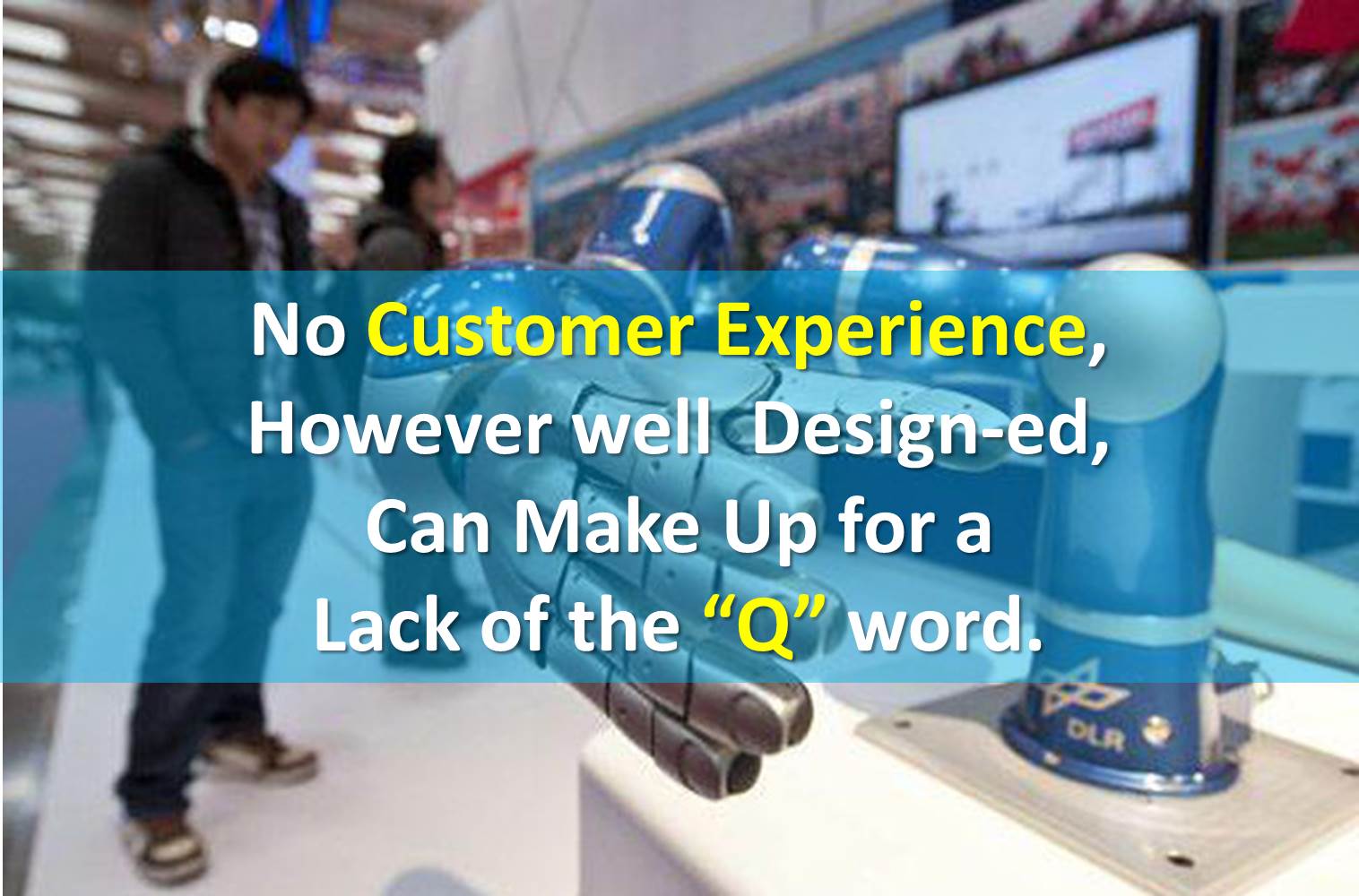
I’m a firm believer that even the best customer experience — one that is designed really well — can’t make up for poor quality associated with products, services customer experience. Quality is an imperative for a sustainable customer experience, customer services and well-designed CX.
Quality is everything in business. It’s tied to customer loyalty, trust, performance over time, the bottom line, and everything else customers care about.
Of course, there is always a temptation to cut costs (or processes) and produce a product or service of less quality with the idea of higher returns.
Many technology companies, as in other sectors fall to this way of thinking. United Airlines (flight), VW (Diesel scandal), Samsung (S7) for instance during the last years.
Can it be prevented?
Obviously yes!
You need to apply 15 basic concepts into your organization to make sure there is a relentless focus on quality:
1. Establish a culture of quality — and this means bringing in a leader focused on delivering quality of products and services. He/she leads with that and understands its impact on customer experience.
2. Make sure you hire quality only — and lead with quality delivery and customer experience in mind. (This is easier said than done, as hiring is tough for most departments, but the process can definitely be improved as opposed to “So, walk me through your resume….”) Ask the question that no one wants to answer.
3. Implement quality assurance standard and methodologies: These should work with your sector and connect with leadership KPI’s. Quality is a great way to decrease costs in customer services, reactive responses and damaging the overall customer experience.
4. Learn from yours and others mistakes: Samsung S7 and United Airlines would be two example.
5. Use the 3 Ps of Planning, Prevention, and Proactivity: Reaction costs a lot more than prevention, so it’s important to focus your processes around prevention initially.
6. Educate all people in your organization constantly and preach and give tools to ensure quality control: We speak often of “The Knowledge Economy” and then … don’t provide any training/education. Invest in Quality, Design, Customer Experience and Services Excellence.
7. Avoid short cuts for quality: As you see with Samsung, they can be very costly.
8. Do not preach quality without delivering a clear pathway…: … for quality testing, calendar, stress tests, and more. This applies in any sector. You need all detailed parts of a testing plan to ensure your products and services are your quality best face.
9. Reduce communication issues across silos: These lead to inconsistent experiences for both customers and internal employees.
10. Involve everyone who needs to be involved: This means transparency of information. You don’t want to restrict information to only certain levels. This usually happens when people are concerned about certain data being proprietary. That’s a concern. But in general, restricting information at the top levels causes a lot of problems — increased stress on those levels, unclear decision-making, etc.
11. Usability testing matters: Reduce complexity of what you produce, and don’t drop features or functionalities without legitimate testing to back it up. Make easy even in the complex parts of your digital or physical products.
12. Involve customers, partners, and employees in the testing process: Add this to roadmap and delivery. Improve your product/service via feedback from multiple channels including detractors, and neutrals to understand some of your pitfalls. This would mean customers (i.e. voice of customer), partners, and employees.
13. Analyze potential risks, and for each create a clear mitigation plan: Samsung did not do this and the results were catastrophic.
14. Design the services and customer experience both digitally and physically in parallel with all above.
15. Don’t give excuses and immediately enter reactive mode when your company makes mistakes. Rather, try to prevent mistakes — and when they occur, try to learn from them. A mistake learned from is less of a failure. Some even believe FAIL stands for “First Attempt In Learning.”
I hope you enjoyed the short article and will highly appreciate to hear your thoughts and experiences with quality failures and how your company overcome it. The original source of this article can be found here.




How do you design your customer experience? Do you use the ‘Q” word?